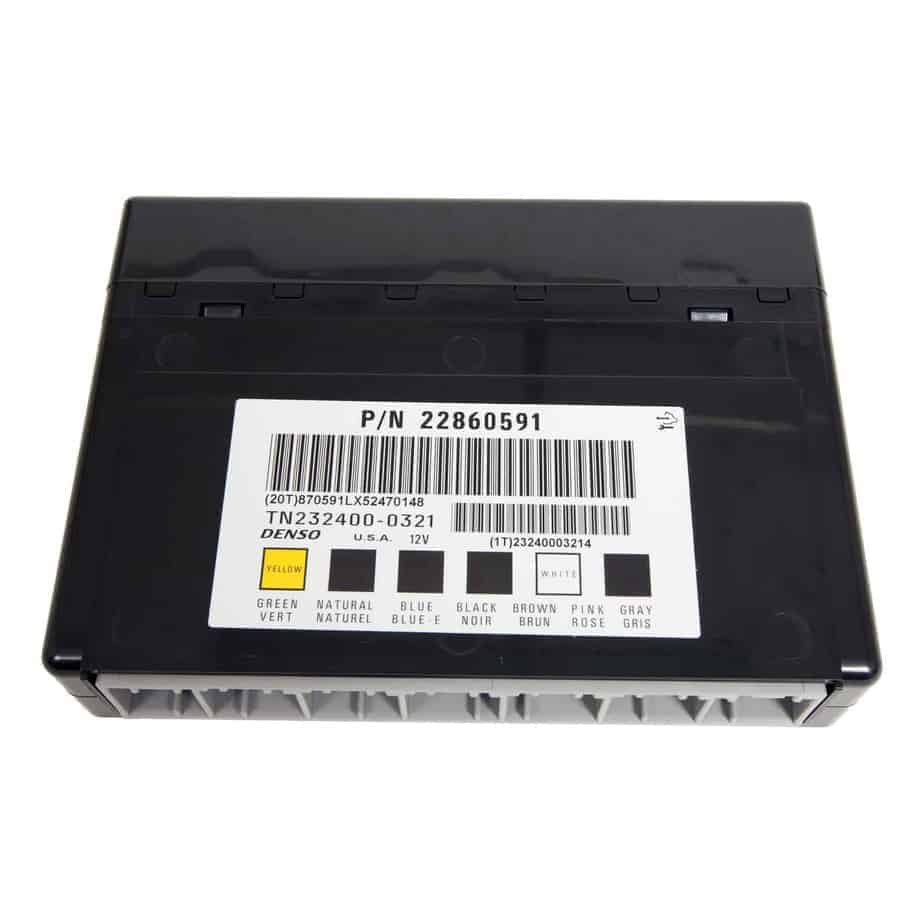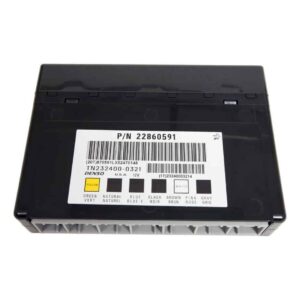Restore Your Vehicle’s Brain and Banish Electrical Gremlins
Are you chasing frustrating electrical issues in your GM vehicle? Flickering dashboard lights, power windows with a mind of their own, or a security system that randomly immobilizes your car are classic signs of a failing Body Control Module (BCM). The BCM is the central command center for your vehicle’s body electronics, and when it starts to fail, it can feel like your car is haunted. Stop throwing parts at the problem. This is the direct, reliable solution you’ve been looking for.
We offer a dependable GM Body Control Module that arrives at your doorstep pre-programmed to your vehicle’s specific VIN. We handle the complicated part by flashing it with the latest, most stable software from GM. This means no expensive trips to the dealership for programming—just a straightforward installation to get you back on the road with confidence.
A Technician’s Notebook: The Case of the Confused Acadia
Just last month, a 2011 GMC Acadia was towed into my bay. The owner was at his wit’s end. The radio would turn on and off, the interior lights would pulse, and sometimes the vehicle wouldn’t start at all, just a click. He had already replaced the battery and alternator. After connecting my scan tool, I saw a storm of communication error codes (U-codes) between various modules. This is a tell-tale sign. In my 20+ years of experience, I’ve seen this hundreds of times; the BCM is the traffic cop for the car’s network, and when it fails, you get chaos. We installed one of these VIN-programmed BCMs, performed the quick post-install procedures, and the vehicle’s electrical system was stable and reliable again. The customer was thrilled to have his dependable family vehicle back without a massive dealership bill.
Is Your Vehicle Showing These Signs?
- ✔ Erratic or non-functional interior and exterior lights.
- ✔ Power windows, locks, or mirrors working intermittently or not at all.
- ✔ The anti-theft or security system acting up, preventing the car from starting.
- ✔ A flurry of warning lights on the dashboard with no clear cause.
- ✔ Communication errors (U-codes) when scanned with a diagnostic tool.
- ✔ Inconsistent A/C and heater blower motor operation.
- ✔ Wipers turning on by themselves or not working when commanded.
A Straightforward Guide to Installation
- Safety First: Always disconnect the negative terminal from your vehicle’s battery and wait a few minutes before beginning work.
- Locate the BCM: On most of these GM models, the BCM is located under the driver’s side of the dashboard, often to the left of the steering column or in the center dash area. A quick search for your specific model can confirm the exact location.
- Disconnect and Remove: Carefully unplug all the electrical connectors from the old BCM. They have locking tabs that need to be depressed. Once disconnected, unbolt or unclip the module from its mounting bracket.
- Install the New Module: Mount your new, pre-programmed BCM in the same location. Firmly plug in all the electrical connectors, ensuring each one clicks securely into place.
- Reconnect and Test: Reconnect the negative battery terminal. Turn the key to the ‘On’ position and test all body functions—lights, windows, locks, wipers, etc.
Important Post-Installation Steps
After installing your new GM Body Control Module, a couple of final steps are required to ensure full system integration and safety. This is standard procedure and ensures all related vehicle systems communicate correctly with the new module.
- Airbag System Reset: The airbag warning light will likely be on. You must perform the ‘Setup SDM Primary Key in BCM’ procedure using a professional-grade diagnostic scan tool. This re-establishes the security handshake between the BCM and the airbag system.
- Brake Pedal Position Sensor Relearn: Some vehicles may require a brake pedal position sensor relearn procedure. This recalibrates the sensor to the new module, ensuring accurate brake light operation and stability control function.
Note: If you are not comfortable performing these relearn procedures, a local qualified mechanic can typically complete them for you quickly.
Verified Vehicle Compatibility
This module is a direct replacement for part number 15872421 and is interchangeable with the following part numbers: 10382479, 15093910, 15276271, 15299986, 15819552, 15828601, 15837419, 15872388, 15880684, 15921352, 15921353, 15948438, 15948439, 20815898, 20839063, 20864767, 20864768, 20921435, 20921436, 20935349, 22860591, 25826124, 25826125, 25847588, 25847589, 25892622, 25910474, 25934762, 25934763, 95151084. It fits a wide range of vehicles, including:
Please verify the part number or consult the detailed fitment list in the original description to ensure it matches your specific vehicle options.
Frequently Asked Questions
What exactly does a Body Control Module do?
The BCM acts as the main computer for your vehicle’s comfort and convenience features. It controls non-engine-related functions like power windows, interior/exterior lighting, door locks, security system, wipers, and climate control fans.
Why do you need my VIN number?
Your Vehicle Identification Number (VIN) allows us to program the BCM with the correct software and vehicle-specific settings for your exact model, year, and options package. This ensures it works seamlessly once installed.
Is any other programming needed after I install it?
The main programming is done. However, as noted above, you will need to perform a security relearn procedure to sync the BCM with the airbag module (to turn off the airbag light) and potentially a brake pedal position sensor relearn. These are simple procedures for any shop with a capable scan tool.
Can I perform the installation myself?
Yes, for many DIYers with basic tools, the physical installation is very manageable. It involves locating the module under the dash, swapping connectors, and bolting the new one in. The only part that may require a professional is the post-install relearn procedures if you don’t own a high-end scan tool.
Where is the BCM typically located on these vehicles?
Common locations include behind the driver’s side lower dash panel (to the left of the steering column), behind the glove box, or in the center console/dash area. The exact location varies by model, so we recommend a quick online search for your specific vehicle for a precise diagram.



